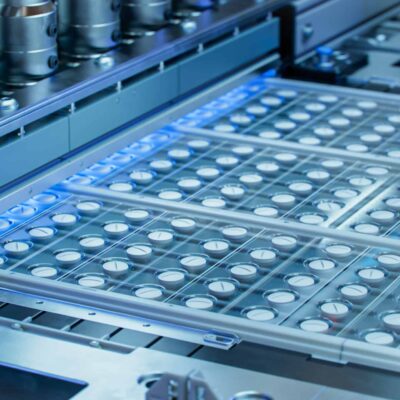As the automotive industry increasingly embraces hybrid systems, fully electric vehicles, and enhanced connectivity, innovation within this sector is constantly advancing and none more so than with regard to autonomous technology. While this is not a new concept in the automotive space, it made major waves in the industry this year in terms of legal action and shifting consumer sentiment. As regulators and manufacturers alike attempt to understand this technology and mitigate safety concerns, let’s take a look at a couple of recent conflicts that could set a precedent for future matters and get an automotive industry expert’s point of view regarding the future of litigation concerning self-driving vehicles.
Autonomous Vehicles on Autopilot Toward More Oversight
Recently, Tesla has been embroiled in multiple high-stakes conflicts following two separate fatal accidents that occurred while their Autopilot system was activated. In both of these cases, Tesla denies any wrongdoing, blaming driver error for the incidents. Recently, Tesla also recalled its Autopilot software in nearly 2 million vehicles after the National Highway Traffic Safety Administration claimed that the nomenclature gives drivers a false sense of security, noting that more than 1,000 crashes had occurred while the system was engaged.
The overall promotion of its Autopilot technology is problematic; while Tesla employees stand by claims that they warn drivers that the system is not “fully self-driving”, it’s marketing (and name) suggests that the Autopilot system, when engaged, does not require the full attention of the driver. These suits highlight concerns around transparency regarding autonomous vehicle capabilities and risks, and the way they are resolved will undoubtedly shape the future of AV and ADAS litigation.
Likewise, GM’s aspiration of creating a future of “zero crashes, zero traffic, and zero emissions” with its new fleet of robotaxis came to a screeching halt after a slew of traffic accidents and a hit-and-run incident involving a Cruise vehicle left a woman severely injured. And like Tesla, Cruise’s “autonomous” denotation is more complex than it appears, as employees have now stated that a human specialist intervenes in Cruise’s autonomous operation every 2.5-5 miles, or 2-4% of the time via remote assistance (RA). Following the latest accident, the California DMV suspended GM’s AV permits; Cruise’s CEO Kyle Vogt resigned along with the company’s co-founder and chief product officer, Dan Kan; and the manufacturer recalled all 950 vehicles in its autonomous fleet.
Now, GM is facing some regulatory pushback after they failed to disclose crucial details associated with the accident; the California Public Utilities Commission ordered Cruise to appear in a February hearing for “misleading the Commission through omission regarding the extent and seriousness of the accident” and “making misleading public comments regarding its interactions with the commission.” GM could face more than $1.5 million in fines and additional sanctions over its omissions, sparking questions about the future of autonomous accident reporting.
Further, the National Highway Traffic Safety Administration has also opened an investigation into GM’s AV systems after receiving a multitude of reports about a lack of caution regarding pedestrians on roadways. These regulatory probes are sure to set major precedents in the industry when it comes to AV accidents and will likely spark future conflicts as other industry players attempt to navigate the space.
Expert Perspective: Julie Wurmlinger on the Proper Integration of Autonomous Taxi Technology
In reviewing the Cruise conflict, a 30-year veteran of the automotive industry and WIT Advisory Panel member Julie Wurmlinger highlights the inherent legal challenges for robotaxi companies and partners.
AV companies have been operating without much oversight as there is currently an unclear legal and regulatory foundation for disclosures of remote assistance (RA) and other operational strategies. Without full disclosure and regulatory requirements for disclosure of RA’s, assignment for responsibility of safety incidents involving pedestrians and other drivers will likely result in complex litigation as well as a potentially tarnished image for the technology as a whole.
Another challenge for robotaxis involves the passenger pick-up and drop-off (PuDo) strategy. The robotaxi autonomous vehicles are expecting passengers to be on/at curbs or at other PuDo locations. Because these locations are not currently regulated, it is very difficult for the autonomous robotaxi to distinguish between a passenger hailing a cab off the curb (in the road) from a pedestrian walking across the road or through a crosswalk.
This is why Wurmlinger feels that in order to integrate robotaxis properly, AV companies will need to develop very sophisticated AI technology that can help vehicles make a precise pedestrian versus passenger calculus.
Further, while advanced technology is being developed, in the interim, Wurmlinger believes that AV companies could set up specific stops and routes similar to that of a bus, ensuring vehicles would only travel on that route and would only stop at those points. She feels that along with improving human recognition software and use cases for safety, autonomous vehicle companies would be wise to offset litigation risks by working with urban areas to designate pre-determined routes and PuDo points, along with deterrents for pedestrians hailing robotaxis from the road (off-curb).
Evaluating the Legal Risk Associated with Self-Driving Vehicle Technology
Aside from incidents associated with Cruise’s technology and Tesla’s marketing, another consideration for potential litigation in this space looks at one of the biggest complications manufacturers are faced with when it comes to autonomous technology: the transference of the driving task from the vehicle to the driver back to the vehicle, and so forth. According to Wurmlinger, in the instance of a collision, it is important to be able to make the distinction over who is liable and properly evaluate claims of fault by either the driver or the vehicle, as there is a window of time where a driver needs to re-orient to driving the vehicle (somewhere between 8 seconds to 40 seconds).
To orient autonomous industry players for success and prevent potential litigation, United States regulators need to create specific guidelines surrounding the responsibilities during the gap between the vehicle and owner control. US regulations are still evolving to regulate AVs; in 2016, the Federal Automated Vehicles Policy was released with several updates over the years, but it is unclear if the policy covers this transference. Federal Motor Vehicle Safety Standard-like regulations have been updated by the National Highway Traffic Safety Administration to support AVs, but not enough to mitigate the risks associated with autonomous driving liability.
How Experts Can Assist in Autonomous Vehicle Litigation
While many automotive manufacturers have pulled back on their AV investments, many others are attempting to shift their operations to mitigate legal risks. Major legal challenges involving this technology will center largely around product liability concerns, consumer protections, and regulatory compliance. Determining liability in accidents has already been the basis of multiple AV disputes and will likely continue to be a point of contention in this space. Consumer protections will also continue to be a concern as issues around false advertisement, consumer rights, and warranties will prompt important questions about driver risks. And as these technologies evolve, regulators will continue monitoring AV operations to ensure they are complying with safety and operational standards.
Identifying the hot spots in the autonomous and electric vehicles markets is core to recognizing the opportunities for future legal disputes in the space. When litigation ensues, attorneys will need experts from a wide range of areas related to self-driving vehicles, including computer scientists, wireless technology engineers, mechanical engineers, and industry insiders who understand the nuances associated with this complex space. Ideally, attorneys should leverage these experts to address various specialties, whether it be to understand specific advanced driver assistance systems (ADAS), explain industry practices and policies, or opine on AV system components.
Want to learn more about what’s to come in the automotive industry and electric vehicles market? Reach out to WIT to schedule a partner briefing or to connect with the best experts. Our electric vehicles expert team was created to address what we expect to be the key areas of litigation in the move to electric and autonomous vehicles.








